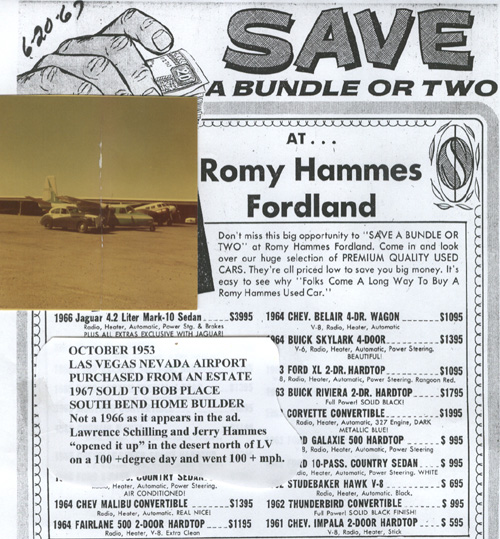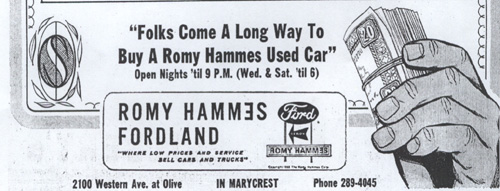![Jerry Hammes.com [Logo]](../../../images/logo.jpg)
|

|
1953 Jaguar
[Back to topic list] [Back to 1953 Jaguar Topic]  Jaguar Mark VII, VIII, and IX by Bill Vance Most of the cars imported to North America in the late 1940's and early '50s were from England. They came as sports cars and sedans, with most of the sedans being small four passenger models. Then in 1951 we learned that English sedans need not be tiny and cramped. The arrival of the Jaguar Mark VII showed North Americans that a British car could be roomy, comfortable, elegant and fast, and still not be in the Rolls-Royce price class. The Mark VII was unveiled at the 1950 Earls Court Motor Show in London, and although it not quite the sensation that the fabulous Jaguar XK120 had in 1948, it was warmly received. Part of the Mark VII's appeal was that it was powered by the same awesome double-overhead cam in-line six-cylinder engine that propelled the XK120 roadster to its 193 km/h (120 mph) top speed. Although it displaced only 3.4 litres (210 cu in.), a little less than a Chevrolet, its 160 horsepower was equal to the 5.4 litre (331 cu in.) Cadillac V8. The Jaguar double-overhead cam engine had really been intended to power a large sedan. The XK120 roadster was originally developed as a test bed for the engine, but it turned out so well that Jaguar's guiding genius, William Lyons, produced the roadster first. The Mark VII, therefore, represented the "real" home of this famous powerplant. The Mark VII was a smooth blending of traditional British lines into a spacious, modern envelope body. The beautiful vertical bar grille was particularly appealing. It had a 3,048 mm (120 in.) wheelbase, and stretched 4,978 mm (196 in.) over-all. The Mark VII tipped the scales at 1,796 kg (3960 lb), almost the same as the Chrysler Saratoga V8 that Road & Track magazine tested in November, 1951. In spite of its weight, and an engine smaller than a Chevrolet's, the Jaguar was no slouch in performance. Road & Track (10/52) recorded zero to 96 km/h (60 mph) in 12.6 seconds, not as fast as the Hemi-powered Saratoga's 10 seconds, but still very respectable. The Jag was well ahead of the Lincoln Cosmopolitan (R & T 3/53), which did zero to 96 (60) in 14.4 seconds. And its luxury import competitors were even slower. The Mercedes-Benz 300 sedan took a leisurely 16.1 seconds to 96 (60), (R & T 4/53), while the vaunted Rolls-Royce Silver Dawn took an even longer 17.0 seconds (R & T 8/53). The Mark VII was about equal to the American cars in top speed too. R & T recorded a maximum of 167 km/h (104 mph), about the same as the Chrysler, although a little slower than the Lincoln's 174 (108)). Again, its import competitor, the Mercedes 300, was slower, reaching only 158 (98). And the Rolls-Royce with its loftily acclaimed "adequate," horsepower, achieved only a stately 142 (88). Although it was large, the Mark VII proved surprisingly successful in racing and rallying. No less a personage than Stirling Moss won sedan races in one. And Mark VII's excelled in the daunting Monte Carlo Rally, finishing fourth and sixth in 1952, second in 1953, and finally winning in 1956. In addition to its excellent performance, the Mark VII was very practical. It could seat five or even six people. Two fuel tanks located in the rear fenders, with their Jaguar trademark twin fillers, allowed a large 17-cubic-foot trunk. Inside was traditional British wood trim and leather seats, along with such niceties as door-mounted tool trays. North Americans welcomed Jaguars with open arms and at one point 96 percent of Jaguar's output was slated for export. The Mark VII received an automatic transmission option in 1953 to supplement the four-speed manual. An electric overdrive was available with the manual gearbox from 1954. The Mark VII was manufactured from 1951 to 1956, with the '54 to '56s designated as Mark VIIM's because of their more powerful 190 horsepower engine. It became the Mark VIII for 1957, with such changes as a one-piece windshield, cutaway rear fender skirts, and 210 horsepower. The last of the series, the Mark IX, came in 1959 with the engine enlarged to 3.8 litres, and 220 horsepower. Mark IX's were fitted with power steering and four-wheel disc brakes, and by this time most big Marks came with automatic transmissions. Production ceased in 1961 when the Mark IX was replaced by the more modern unit-construction Mark X. In 11 model years more than 47,000 Mark VII, VIII and IX's had been produced. The big Marks were important cars for Jaguar, epitomizing Jaguar's motto of "Grace, Space and Pace." While they didn't have the scorching performance, nor quite the panache of the glamorous XK series cars, they did establish Jaguar as a producer of the high-performance luxury sedans for which they are still famous today. |
 |
 |
 |
 |
 |
 |
 |
 |